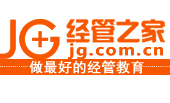This leaves plenty to do for Mr Ren, now 66, before passing on his command. Even without its various overseas hurdles, maintaining Huawei’s rapid rate of growth (see chart) is the firm’s most pressing challenge, argues Stéphane Téral of Infonetics Research, a market-research firm.
The reason is that the market for telecoms equipment is shifting. In recent years, most investment has gone into building networks, particularly the wireless kind. In this area, Huawei could deliver exactly what was needed: well-designed cheap equipment. Yet increasingly, as in most IT markets, it is software and services where money is being made. At Ericsson, services already generate a third of revenues, compared with half that proportion at Huawei.
In software and services it will be harder for Huawei to catch up than it was in hardware, expects Dan Hays of PRTM, a consultancy. Language and cultural differences can be big barriers to understanding the needs of foreign customers. A highly disciplined and hierarchical organisation like Huawei may be very good at optimising and cleverly combining bits of technology, but less so at providing high-end services and writing cutting-edge software.
 No peeping inside
No peeping inside
The biggest cultural barrier to Huawei’s continued growth, at least in the West, may be its lack of transparency. As customers come to rely more and more on the firm, they will want to know a lot about its internal workings, predicts Dan Breznitz, a professor at the Georgia Institute of Technology and co-author of “Run of the Red Queen”, a book on innovation in China. But trying to understand Huawei is a bit like Vatican-watching.
Who really controls Huawei is still an unanswered question. The firm says that Mr Ren holds only 1.42% of the stock and that the rest is in the hands of the employees who own Huawei’s holding company. These pool their interests in a shareholders’ union which is run by an elected committee. But the firm does not disclose much about this body, or who sits on it. Some say that the power rests with members of Mr Ren’s family. Others argue that the place is actually run by a “shadow structure” of the Communist Party.
An even bigger mystery is Mr Ren himself, who must be the most reclusive boss in the technology industry. He has never given a press interview—proof, some say, of his great self-discipline. The most detailed biography Huawei has released is some 200 words in its open letter to the American government.
To its credit, Huawei has started to address both its strategy and cultural problems. As for its strategy, the firm says it wants to enter the “enterprise market”, selling networking equipment and other types of hardware to companies other than telecoms operators. And Huawei plans to move fast, says William Xu, the president of the newly founded unit charged with this task: by the end of 2011 it will already boast 10,000 employees.
Huawei also intends to take a big part of the market in data centres for cloud-computing services and in smartphones. If it succeeds with smartphones, Huawei could become a household name. It wants to offer models costing between $70 and $200—the “golden range”, in the words of Victor Xu, who leads the efforts to market Huawei’s devices. By 2013 he wants Huawei to be among the world’s top five mobile-phone makers.
These moves play to Huawei’s strengths, but adapting its culture may be more difficult. Like its rivals the firm has spread its research activities around the world; it now operates 20 R&D centres globally. It has also hired more Westerners, in particular to work for its services business. But Shenzhen is still the centre of Huawei’s universe and non-Chinese employees remain a small minority there. None have made it into the inner-management sanctum.
Most importantly, efforts to become more transparent have not got very far. In April its annual report, which is audited by KPMG, for the first time named the directors of the firm’s boards and even gave short biographies. But it failed to mention that one member is Mr Ren’s daughter and another his brother—a fact that the firm confirmed only later, adding that both have been senior managers for some time.
Nor does it help that, as far as Mr Ren’s succession is concerned, the firm appears to be moving backwards. Most observers expected that a member of the tight circle of top executives would eventually take the helm, most likely Sun Yafang, who chairs the board. However, in October it was reported that Mr Ren was trying to promote family members and has plans to position his son, Ren Ping, to become his successor. Spokesmen deny that there are any such plans, but it would not be the first time in China that rumours have been launched to test the waters.
The move that would create true transparency seems to be the one that is still out of the question: taking at least part of Huawei public. Being a listed company would distract management and limit the freedom to make decisions, company officials explain. Yet, observes Duncan Clark of BDA, a telecoms consultancy in Beijing: “The fact that they haven’t gone public is feeding the suspicions.”
Huawei appears to want to have it both ways: remaining a culturally Chinese company, perhaps even family-run, while competing with publicly traded Western giants. This is unlikely to work. One way or another, Huawei needs to become less secretive if its long slog is to reach the destination that Mr Ren is aiming for.



 扫码加好友,拉您进群
扫码加好友,拉您进群




 收藏
收藏

